Design Of Mobile-Based Decoration Service E- Marketplace Application System
on
p-ISSN: 2301-5373
e-ISSN: 2654-5101
Jurnal Elektronik Ilmu Komputer Udayana
Volume 8, No 3. February 2020
Design Of Mobile-Based Decoration Service
E- Marketplace Application System
I Made Andrayuga Mardhayiskaa1, Cokorda Rai Adi Pramarthaa2 aInformatics Department, Udayana University Bali, Indonesia
Abstract
Nowadays, people tend to search for goods or services through their mobile device using an electronic marketplace. In Bali, a decoration business for weddings, religious events, and other events grow rapidly. This business provides services that rents various kinds of decorations such as tents, chairs, tables, stages and others that are commonly used in ceremonial events. However, unfortunate for decoration service entrepreneurs who have high prospects, many of them are using the traditional method of marketing and sales such as word-of- mouth. Moreover, many of them not catching up with the current development of the e-market. By listing the services on the e-marketplace, easier for the customer to find the desired decoration services that fit their needs and budget. Also, by utilizing the emarketplace will save the customer time, because the customer can just search, compare, and book to rent decorations without leaving home. The purpose of this research project is to create a mobilebased application of market place that accommodates entrepreneurs renting decorations. Our purposed mobile-based marketplace uses the prototyping method to build this mobile-based application.
Keywords: Decoration, Find Decoration, E-MarketPlace, Application, Mobile
Decorative art means decorating or beautifying an object, building, or other object so that it is in accordance with the expected conditions, for example, decoration in relation to a party is to create an atmosphere appropriate to the event through decoration, flowers, arrangement of furniture, and so on. The decoration business is a business that has good prospects in Indonesia, especially in Bali. Because the decoration business is closely related to official events, be it weddings, music events, custom events, and others. Almost every event in Bali especially uses decorations that are small in scope, for example, tents, chairs, sound, stage, tables. Based on the writer's observations, the decoration business is a business that is rapidly developing and most sought after by the public every time they have an event. Many people who do not want to bother decorating the venue, or the difficulty in finding decorations that are suitable for the event. Therefore, business people are very passionate in opening decoration services. A mobile device or what we commonly call a cellphone is a sophisticated device that is
designed to be easily carried everywhere and helps with work. Based on the problems that have been explained above, this study aims to design and build an e-market application for mobile-based decoration services. This mobile based application will make it easier for people to determine the desired decoration according to their needs.
-
A. E-marketplace.
E-marketplaces are online markets where buying and selling occur. Functionally, the actual function of the e-marketplace is no different from the ordinary market, namely Matching between sellers and buyers, as a transaction facility and as an institutional infrastructure. The most crucial difference lies only in its online. In the e-marketplace, we can 'go to the market' anytime and anywhere as long as there is internet access. Its features also make the buying and selling process easier. We can search for goods or services that we need just by typing in the specifications, then the system instantly matches. Save more time, energy, and also costs. E-marketplaces have two types, namely Private Marketplace and Public e- Marketplace. The difference between the two is the Private e-marketplace one to many which means that the emarketplace is owned by an individual or a company to serve many buyers, while many to many where there are many sellers and buyers.
-
B. Decoration
Decorative art means decorating or beautifying an object, building, or other object to fit the expected conditions, for example: decoration in relation to a party is to create an atmosphere that matches the event through decoration, flowers, arrangement of furniture, and so on.
-
C. Android.
Android is a Linux-based operating system that is designed for touch-layer mobile devices such as smartphones and tablet computers. Android was originally developed by Android, Inc. Android was first officially released in 2007. The android user interface is generally in the form of direct manipulation, using touch gestures which include sliding, tapping and pinching to manipulate objects on the layer. To enter text on Android, there is a virtual keyboard for writing text. Currently Android is the most widely used smartphone operating system in the world. Android is a choice for companies or technology developers who have low costs, can be modified easily and lightly for high-tech devices without having to develop it from scratch. In addition, several advantages of the Android operating system compared to other operating systems including user friendly, what is meant here is that the Android system is very easy to run. Android is very easy to run even for people who are not familiar with smartphones. In addition, a more attractive appearance is also one of the reasons Android is superior to other operating systems.
-
A. Prototyping Method
system development process often uses a prototype approach (prototyping). This method is best used to resolve the problem of misunderstanding between users and analysts arising from the user being unable to clearly define their needs [1]
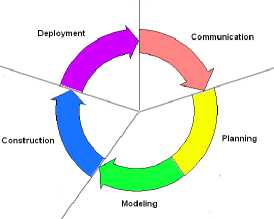
Picture 1. Metode Prototyping
The stages in the Prototyping Model are summarized as follows:
-
1) Step 1: Requirements gathering and analysis
A prototyping model starts with requirement analysis. In this phase, the requirements of the system are defined in detail. During the process, the users of the system are interviewed to know what is their expectation from the system.
-
2) Step 2: Quick design
The second phase is a preliminary design or a quick design. In this stage, a simple design of the system is created. However, it is not a complete design. It gives a brief idea of the system to the user. The quick design helps in developing the prototype.
-
3) Step 3: Build a Prototype
In this phase, an actual prototype is designed based on the information gathered from quick design. It is a small working model of the required system.
-
4) Step 4: Initial user evaluation
In this stage, the proposed system is presented to the client for an initial evaluation. It helps to find out the strength and weakness of the working model. Comment and suggestion are collected from the customer and provided to the developer.
-
5) Step 5: Refining prototype
If the user is not happy with the current prototype, you need to refine the prototype according to the user's feedback and suggestions.
This phase will not over until all the requirements specified by the user are met. Once the user is satisfied with the developed prototype, a final system is developed based on the approved final prototype.
-
6) Step 6: Implement Product and Maintain
Once the final system is developed based on the final prototype, it is thoroughly tested and deployed to production. The system undergoes routine maintenance for minimizing downtime and prevent large-scale failures.
-
B. Modeling Methods
Unified Modeling Language (UML) is one of the most reliable tools in the world of object-oriented system development. This is because UML provides a visual modeling language that allows system developers to make a blueprint for their vision in a standard form, is easy to understand and is equipped with effective mechanisms for sharing and communicating their designs with others. The system design flow used is use case diagram and activity diagram.
The system design flow used is use case diagram
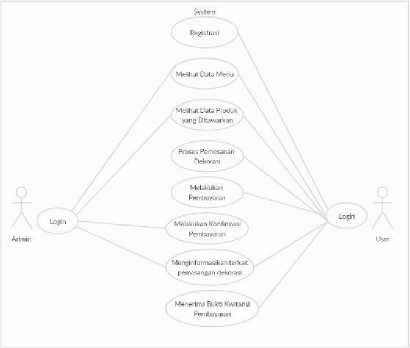
Picture 2. Use Case Diagram
In the use case diagram above it can be explained that, the admin login first after that the admin can access the menu data, the product data offered confirms the payment, informs about the installation of decorations. Then the user can access all the menus in the application after logging in first.
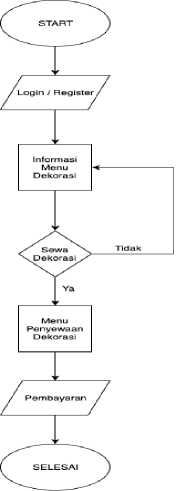
Picture 3. System Flowchart
Based on the description and discussion before, in this study it can be concluded that with the existence of this decoration e-market place, users in searching and ordering decorations become easier. Users who want to look for decoration services are facilitated by the many choices.
References
-
[1] Ogedebe, P.M.,& Jacob, B.P. , 2012, Software Prototyping: A Strategy to Use When User Lacks Data Processing Experience. ARPN Journal of Systems and Software. VOL. 2, NO.6 , 2012
-
[2] Axel, Najoan, dkk. “Rancang Bangun Aplikasi Berbasis Android Untuk Informasi Kegiatan dan Pelayanan Gereja”, UNSRAT, 2017.
217
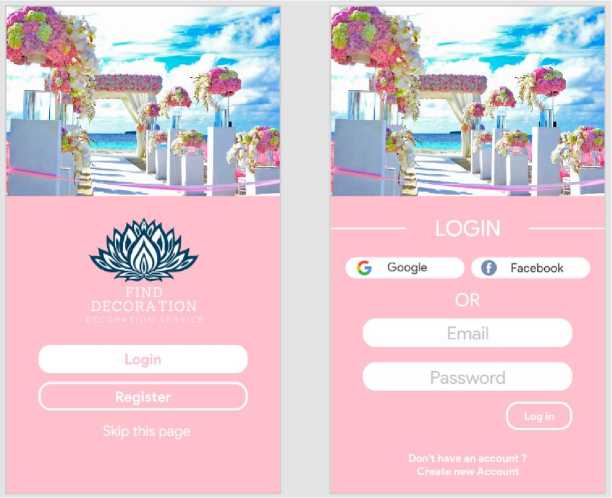
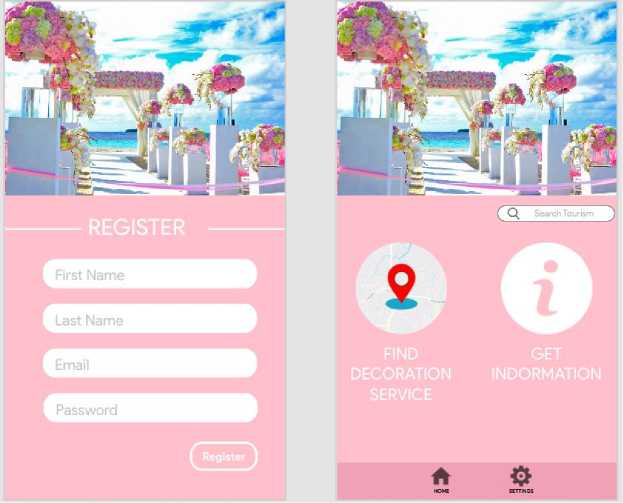
Discussion and feedback